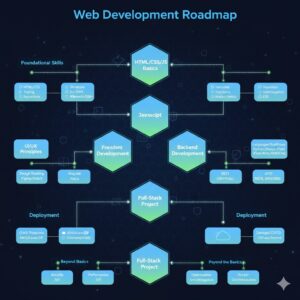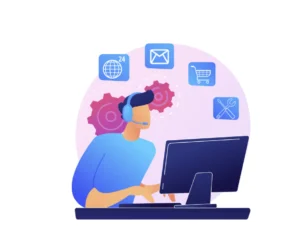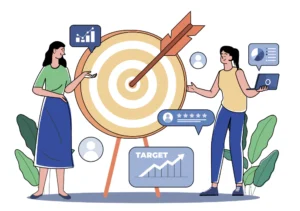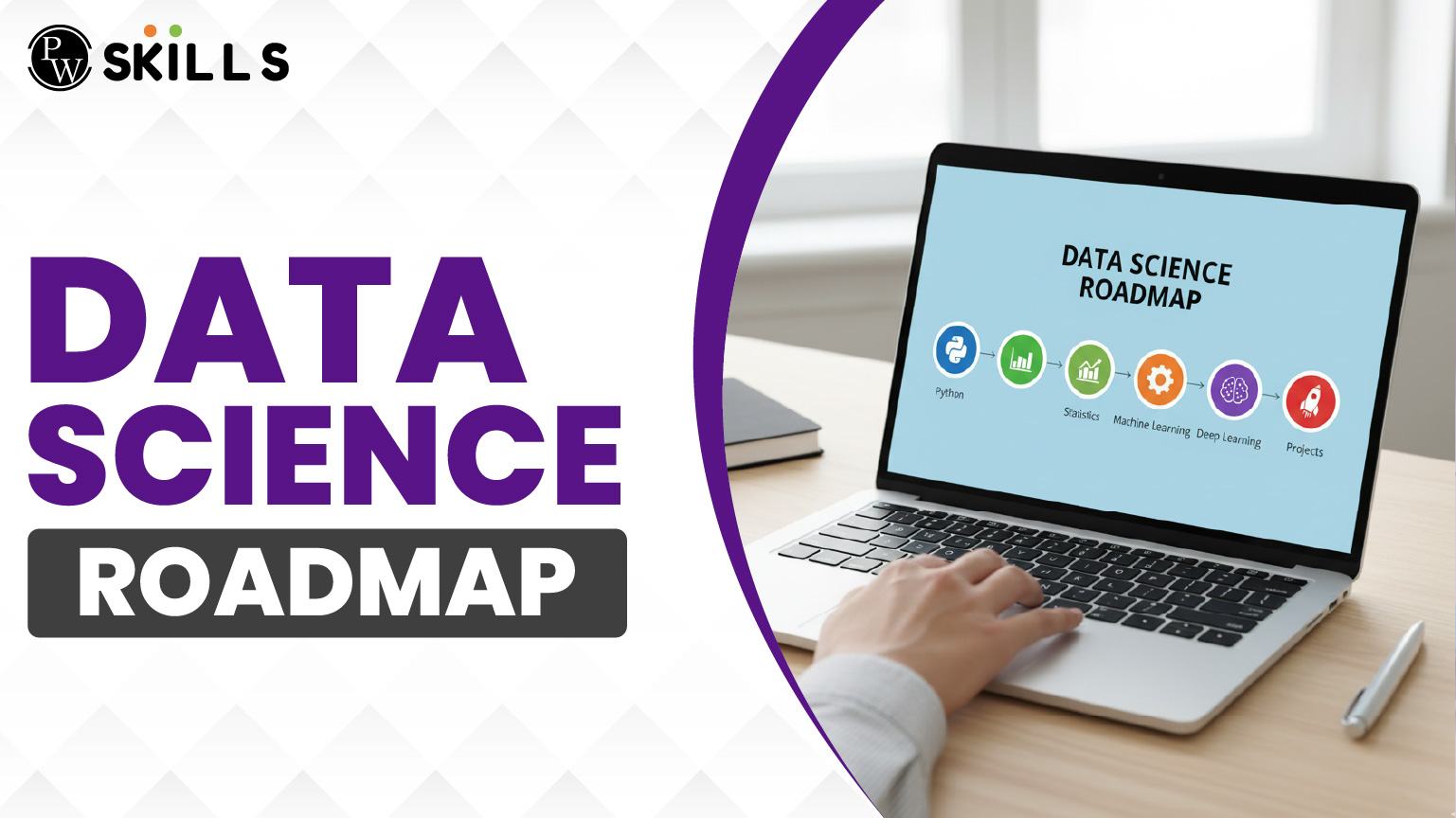Now imagine that you could look into the future: the magic in which every mundane daily activity would speak a language of secrets. That’s what Data Science is, like predicting which new show you’ll be obsessively watching or alerting doctors to the early signs of tumors or cancers; data science keeps the wheels of modern society churning, transforming huge streams of information into smart decisions.
Let’s face it, though navigating through the data science roadmap might be rather intimidating as you set out to create your own route: full of programming languages, complex algorithms, and all those costly buzzwords.
This article will serve you as your expert guide for Data Science roadmap. Whether you are a newbie or an expert looking to change your career, this guide will prepare you on how to stay relevant in 2025 and beyond.
Let’s start walking through today’s Data Science roadmap from beginner to advance.
What is Data Science?
A Data Scientist is a detective with code and statistics in solving intricate puzzles and predicting future conditions. Before we dive more onto the steps, let’s define just exactly what is this dynamic field.
- Computer Science (Coding): Using programming languages (say, Python) and tools to acquire, process, and manage data. This is the engineer’s toolbox.
- Mathematics & Statistics: Using statistical tests, probability, and linear algebra to understand data patterns, validate hypotheses, and build models. This is the brain of the scientist.
- Domain Expertise: Knowing the business or industry from which the data comes (e.g., finance, healthcare, marketing). This is the context and value that makes the insights meaningful to them.
The Data Science Lifecycle
A data scientist essentially informs data through a life cycle to yield valuable information:
- Ask: Establish the right question (the business problem).
- Wrangle: Clean up and prepare unstructured, raw data into proper format (often 80% of the job!).
- Analyze: Use Statistics and visualization to investigate through the data for trends (Exploratory Data Analysis or EDA).
- Model: The next step is to build Machine Learning algorithms to predict future outcomes or phenomena or classifications.
- Act: Findings must be communicated plainly, and models made available to others for consumption and business value gain.
Why Follow The Data Science Roadmap?
It’s tempting to jump straight to the exciting part – building an amazing AI model. Yet without a roadmap, you might easily get lost, become burnt out, or pick up skills that are already out of date. This roadmap is not just a list of topics; it is a strategic guide to success for 2025.
Here are four core reasons you should stay on this path:
- Stop Wasting Time & Money: Data Science is enormous. A structured roadmap tells you precisely what to learn next and very importantly what to skip for now. This avoids spending unnecessary weeks over topics that are more advanced than your current preparation or subscribing to courses that are not fitting for your current level.
- Build a Future-Proof Skillset: The guide is designed for 2025, focusing on the most advanced and relevant skills: Generative AI (LLMs), MLOps, and Explainable AI (XAI). So if you go along with it, you learn not just basic analytics but much more advanced skills that companies are actively hiring at this time.
- Bridge the Career Gap: Huge differences- A Data Analyst looks backward, looks at past data, whereas a Data Scientist looks forward. It gives the progression—SQL, Statistics, Deep Learning, and Deployment—needed to take you from the foundational roles to the much higher expert ones.
- Put Theory into Authority (The Portfolio Effect): At every stage through the roadmap, real-world projects are integrated. Hence, every concept learned becomes immediately practically applicable to a line in your portfolio, equipping you with the Expertise and Authority to wow recruiters into getting your dream job.
The roadmap is the difference between a convoluted journey and a clear, fast, and efficient pathway to becoming a highly lucrative Data Science professional.
Data Science Roadmap for Beginners

The Core Foundation (Beginner)
This is where your journey starts, creating a solid foundation in the basic tools and theories. Think of these as the simple languages and principles that allow you to converse with data.
- Programming Rules: Python (The Tool You Can’t Do Without)
- Core Concepts: Variables, Loops, Functions, OOP
- Data Trinity: NumPy, Pandas, Matplotlib/Seaborn
- SQL: The General Language of Data
- Basic Operations: SELECT, WHERE, GROUP BY, JOINs
- Databases: The Life of Data
- Statistical & Probabilistic Knowledge: The Big Brain
- Describing Stats: Mean, Median, Mode, Variance, Std Infinitesimal
- Inferential Stats: Hypothesis Testing, p-values, Confidence Intervals
- Distributions: Normal, Binomial, Poisson
Building the Hoarding: Machine Learning & Core Projects (Intermediate)
When all of this has been imparted to you, at least we can start moving into the heart of data science-building models that learn from data to make predictions. The transition for Data Analyst into Data Scientist happens here.
Machine Learning Algorithms: The Heart
Supervised Learning Pillars:
- Regression: Linear Regression, Logistic Regression-Predicting a Number
- Classification: Decision Trees, Random Forests, SVMs-Predicting a Category
- Unsupervised Learning
- Clustering: K-Means, Hierarchical Clustering-Customer Segmentation
- Dimensionality Reduction: PCA-Simplifying Data
- Tool Up-Spreading Success: Scikit-learn
- Workflow: Preprocessing, Training, Cross-validation, Evaluation Metrics (Accuracy, Precision, Recall, F1-score, ROC-AUC)
- Data Visualization & BI Tools: The Art of Story-Telling
- Interactive Dashboards: Tableau, Power BI (Giving Up the Insights)
- Python Libraries: Matplotlib, Seaborn (Exploration)
What About the Software? Tooling Up for Success
You need to know how to actually build and evaluate following models.
Scikit-learn: The definite library for Python classic algorithms in ML. You have to be comfortable with the whole workflow: data preprocessing, training the model, cross-validation, and evaluation metrics (accuracy, precision, recall, F1-score, ROC-AUC).

Data Visualization Tools: While Matplotlib/Seaborn are great for exploration, you need to learn dedicated Business Intelligence (BI) tools to share insights with non-technical audiences. Get proficient in Tableau or Power BI. Often, the story of the data is more important than the model’s accuracy score.
Data Science Roadmap Portfolio: From Concept to Code
This is where you build Expertise and Authority. You should learn by practically performing; all concepts learned should reflect directly into a project. Following project ideas can be used to add in the portfolio.
- Project 1: Regression. Predict a continuous variable (e.g., used car price prediction).
- Project 2: Classification. Predict a categorical variable (e.g., breast cancer diagnosis based on tumor features).
- Project 3. SQL Visualizations: A full data analysis project end to end, pulling data from a SQL database, cleaning it up with Pandas, and rendering an interactive dashboard in Tableau.
Advanced Data Science Roadmap Specialization
Turns you from an apprentice in the field to an industry-level expert who can handle the most sophisticated cutting-edge problems and deploys solutions into the real world. This is the key to thriving in this data science roadmap 2025.
- The Deep Dive: Neural Networks and Deep Learning
- Deep learning is the subfield that powers Generative AI. It handles unstructured data—images, text, audio—where the traditional ML struggles.
- Frameworks: Masters TensorFlow or Pytorch. These are the industry standard for the building of neural networks.
Key Architectures:
- ANNs (Artificial Neural Networks): The basic unit.
- CNNs (Convolutional Neural Networks): Essential for Computer Vision (image recognition).
- RNNs/LSTMs/Transformers: Essential for NLP (Natural Language Processing). This is the architecture behind models like GPT and BERT and very much needed in 2025.
- The Frontier: Big Data and Cloud Technologies
- Cloud Platforms: You should know at least one major cloud provider: AWS, Azure, or Google Cloud Platform (GCP). Know the core services for storage (S3, GCS) and compute (EC2, Cloud Functions).
- Big Data Tools: Familiarize with distributed computing frameworks like Apache Spark for handling huge datasets efficiently.
- Operationalizing AI: MLOps Necessity
- MLOps is the discipline of deploying and maintaining machine learning models in production. This is the single biggest skill gap in the industry right now, which makes it paramount in the data science roadmap 2025.
- Automation: Learn Git for version control and familiarize yourself with Docker (for packaging your model) and Kubernetes (for deployment orchestration).
- Monitoring: Understand how to monitor your model’s performance for model drift and concept drift. Models degrade, and a professional knows how to catch and retrain them.
Data Science Roadmap: Duration, Platforms, and Costs
| Stage | Skills/Topics | Duration (Approx.) | Recommended Platforms | Certifications (Optional) | Approx. Cost (INR) | Notes |
| 1. Programming Basics | Python (NumPy, Pandas), SQL | 2–3 months | Codebasics, Coursera, Udemy | Coursera Python Certificate, HackerRank SQL | ₹2,000 – ₹5,000 | Start with free Codebasics/YouTube if on budget. |
| 2. Math & Statistics | Probability, Linear Algebra, Calculus Basics | 1–2 months | Khan Academy, Brilliant.org, edX | N/A (self-paced) | Mostly free to ₹3,000 | Focus only on applied math needed for ML. |
| 3. Data Wrangling & Visualization | Cleaning Data, Matplotlib, Seaborn, Tableau, Power BI | 2–3 months | Udemy, DataCamp, Kaggle | Tableau / Power BI Certification | ₹5,000 – ₹10,000 | Tableau/Power BI adds industry credibility. |
| 4. Machine Learning | Regression, Classification, Clustering, Model Evaluation | 3–4 months | Coursera (Andrew Ng), PW Skills, Kaggle | Coursera ML Specialization | ₹4,000 – ₹12,000 | Do mini-projects on GitHub after each topic. |
| 5. Real-World Projects | Housing Price Prediction, Sentiment Analysis, Recommendations | Continuous (parallel learning) | GitHub, Kaggle Competitions | N/A | Free | Projects carry more weight than certificates. |
| 6. Deep Learning | Neural Nets, CNN, RNN, Transformers | 3–4 months | Fast.ai, DeepLearning.ai, PW Skills | DeepLearning.ai TensorFlow Cert | ₹7,000 – ₹15,000 | Requires GPU support—use Google Colab free tier. |
| 7. Big Data & Cloud | Spark, Hadoop, AWS/GCP/Azure | 2–3 months | AWS Academy, Databricks, GCP Coursera | AWS Certified Data Engineer, GCP Data Engineering | ₹15,000 – ₹40,000 | Cloud certifications are highly valued in 2025. |
| 8. MLOps & Deployment | Flask, Docker, CI/CD, Model Deployment | 2–3 months | Coursera, Udemy, PW Skills | Docker/Kubernetes Certification | ₹5,000 – ₹20,000 | Bridges ML with real-world applications. |
| 9. Domain Specialization | Finance, Healthcare, Marketing Analytics, etc. | 2–3 months | Industry-specific MOOCs, Kaggle Datasets | N/A | ₹5,000 – ₹12,000 | Specialization boosts employability. |
| Total Journey | Beginner to Expert | ~12–18 months (part-time) | Mix of free + paid | Optional (choose wisely) | ₹50,000 – ₹1,00,000 (flexible) | Free YouTube + Kaggle combo can cut cost drastically. |
Data Science Roadmap 2025: Trends That Define the Future
The field is evolving at warp speed, and your data sience roadmap should impact that change. Following are the trends to include in data science roadmap
Explainable AI (XAI) and Ethics
Add models like deep neural networks. Explainable AI (XAI) techniques, like SHAP and LIME, are in demand because businesses must understand and justify their AI’s decisions, particularly for regulatory and ethical reasons.
Generative AI (GenAI) and LLMs
As the technology of large language models (LLMs) and tools like ChatGPT increasingly are used in analytics field, data scientists will not only analyze but also create data. Adding LLMs through frameworks and understanding Vector Databases for retrieval-augmented generation (RAG) are fast-tracking into “must-have” skills to add in data science roadmap journey.

Data Engineering Tips: Data Science Roadmap
A modern day data scientist has a keen passion of Data Engineering – building clean and reliable data pipelines.
- Always add strong SQL and data pipeline components to your data science roadmap.
- A thorough data science roadmap from your very first Python line to the deployment of a high-tech MLOps pipeline. The journey may be tough but the rewards – in salary, impact, and sheer intellectual curiosity – are immense.
- The secret of getting ahead, said Mark Twain, is to get started . Stop thinking about the perfect curriculum or the best language; get Python and Pandas and begin doing your first project today.
Data science isn’t entirely algorithms; it is about asking better questions and building a smarter world through technology. Start building your understanding and let this road map guide you.
Launch Your Data Science Career through PW Skills
Ready to stop planning and start exploring with help of data science roadmap. PW Skills Data Science course covers everything that is on this roadmap from foundation-level Python and statistics to Generative AI at the advanced level. Learn directly from industry experts, build a portfolio of high-impact projects, and receive career support to land your dream job by 2025.
Enroll now and transform your data passion into a profitable, future-proof career.
The first step will be to learn Python and SQL followed by basic statistics. Yes. Fundamentally, AI builds on the foundation of data science. Without the fundamentals of Python, statistics, and ML, AI tools are of no use, Certainly not. It is the projects and practical skills that usually mean more to employers, especially in 2025.FAQs
How should someone begin their data science journey if they have no tech background?
Is this data science roadmap for 2025 still relevant in this new age of AI?
Is having a master's degree important to pursue data science?

